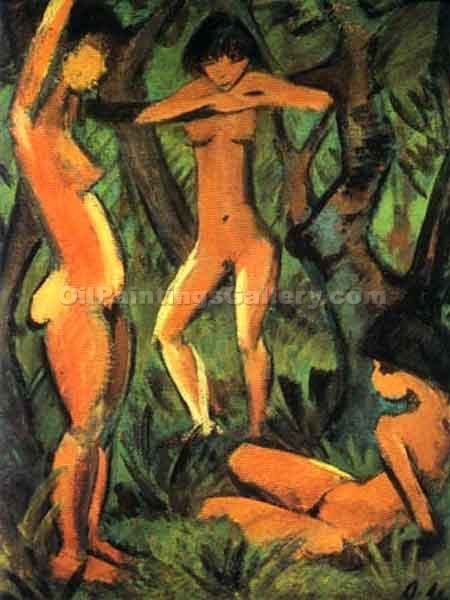Artist: Mueller Otto Germany 18740 to 1930
Showing all 8 results
Otto Mueller was born in Liebau, German Silesia. Between 1890-1892 he was trained in lithography. From 1894 to 1896, he studied at the Academy of Fine Arts in Dresden and continued his Munich concentrate in 1898. He left Munich’s Academy after Franz von Stuck ordered him unskilled. Impressionism, Jugendstil, and Symbolism influence his initial works. At the point when he got comfortable in Berlin in 1908, he turned increasingly more to expressionism. In 1910, he joined ‘Bite the dust Bracke,’ a Dresden-based gathering of Expressionist specialists. He was an individual from the gathering until it disbanded in 1913 because of creative contrasts. Simultaneously, Mueller likewise reached the craftsmen’s gathering of the ‘Blaue Reiter.’During World War I, he battled as a German trooper in France and Russia. After the war, he turned into an educator at the Academy of Arts (Akademie der Bildenden Kunste) in Breslau, where he instructed until his demise on September 24, 1930. In 1937 the Nazis held onto 357 of his works from German historical centers since the photos were viewed as ruffian craftsmanship. Mueller was quite possibly the most melodious of German expressionist painters. The focal theme in Mueller’s works is the solidarity of people and nature. He is principally known for his trademark paintings of nudes and Romani (Gypsy) ladies. Otto Mueller never ascribed bravery to the scene, never dramatism, nor even an inkling of “pittoresque. He depicts the scene calmly yet with clear feelings.







